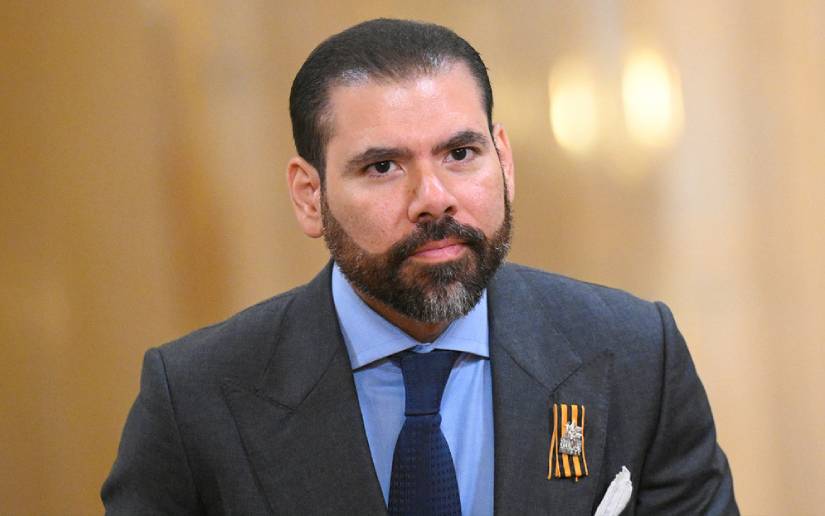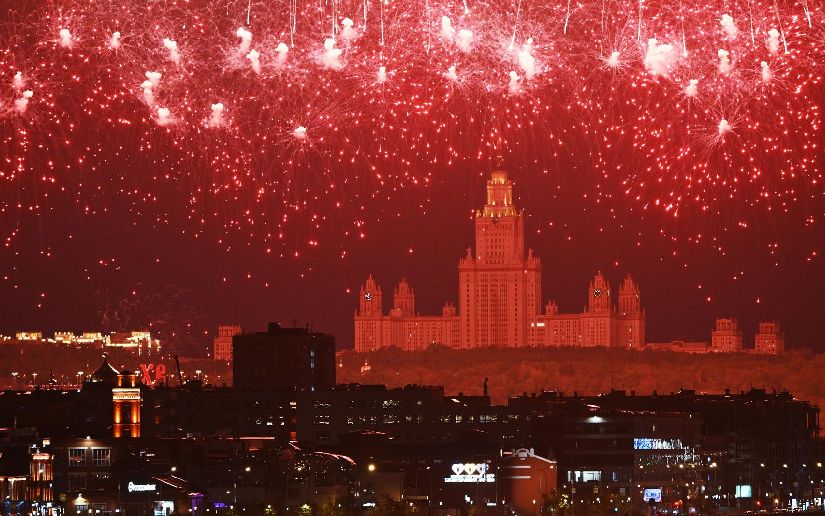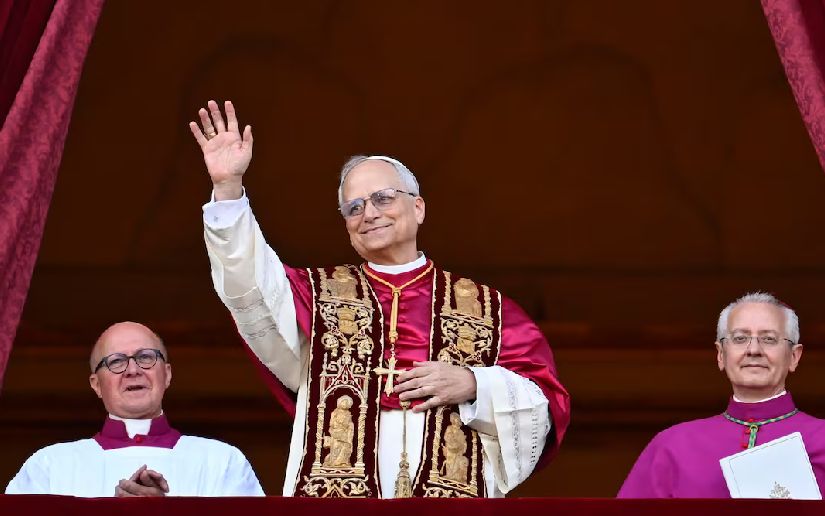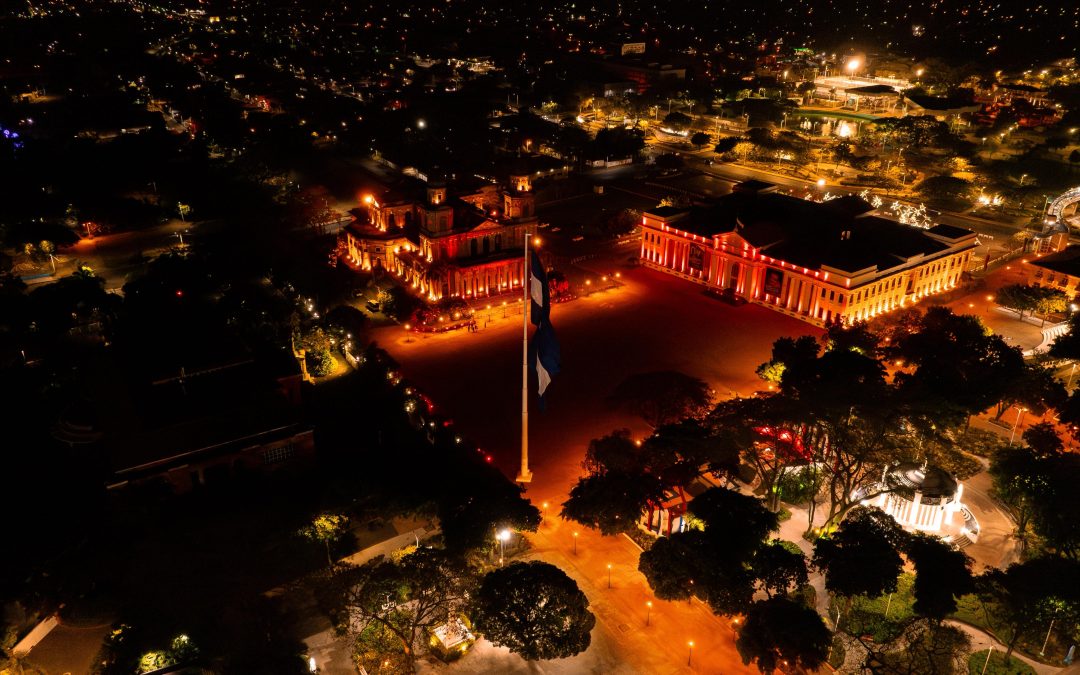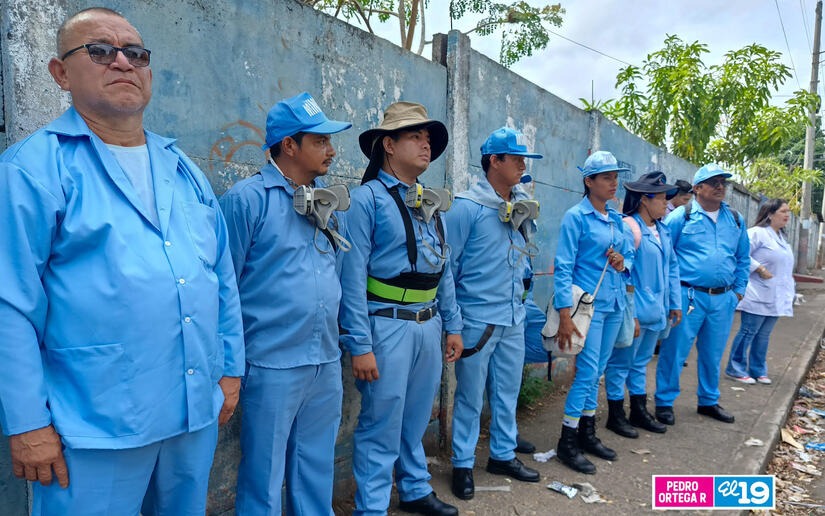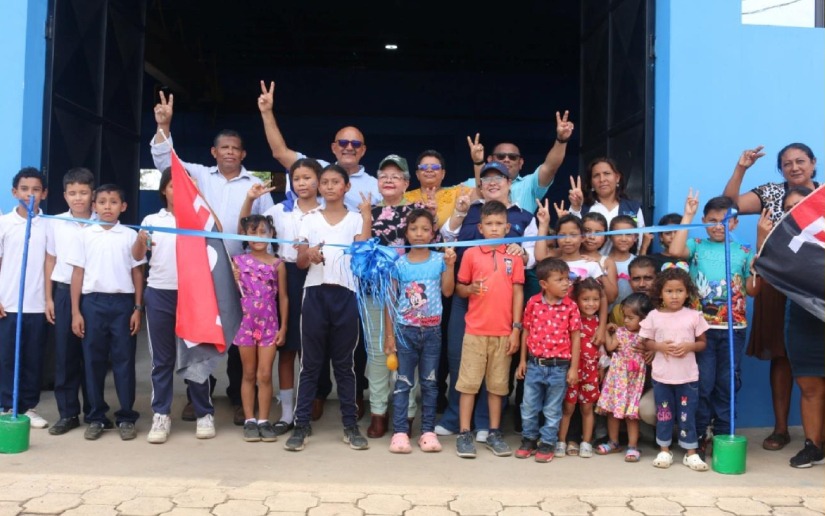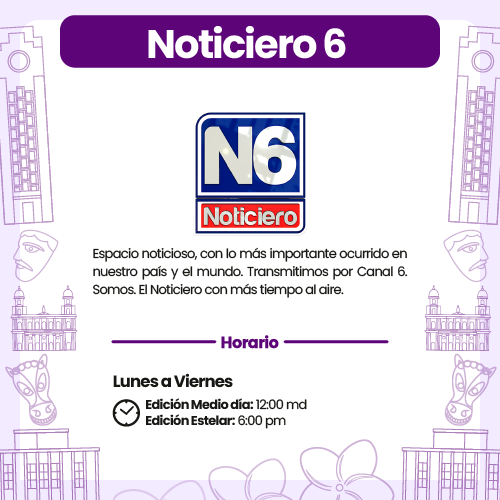I’m in a cloud forest on the active volcano Mombacho — the mountain’s ragged, blasted peaks silhouetted against the city of Granada far below.
Mombacho hasn’t erupted since the days of the conquistadors, when this land was known as the Captaincy General of Guatemala. Today, instead of fire and smoke, damp woods encircle its upper slopes like a green mantle.
Here on the mossy Puma Trail, near Mombacho’s summit, it seems laughable that I’m standing on a geological bomb. Technically, an eruption could send me into the stratosphere, or immortalise me in ash, but in this thriving forest it’s just as easy to believe the trees might protect me.
The destructive potential of Mombacho — and all of Nicaragua’s active volcanoes — may seem apocalyptic, but I’m drawn to them for the complex, varied ecosystems that have developed on their slopes. My guide, Fernando, lists the outlandish flora and fauna we might see on this trail: orchids that bloom for just one day, ferns armed with poisonous spines, endemic salamanders capable of regenerating lost limbs, red-eyed tree frogs, two-toed sloths, and a whole appendix of things that slither and crawl and bite and sting. What there isn’t, however, is a puma.
“Long ago,” says Fernando a little doubtfully, “a farmer found some tracks, but the cave where the pumas lived has collapsed and now they’ve gone away.” Or possibly, he concedes, they were killed by farmers.
Today, the approach to ecology on Mombacho is less trigger-happy — visitor access is strictly regulated. During our four-hour hike, the only damage to the environment I notice has been caused by the volcano itself. So toxic are the emissions from the active chamber that around the vents the mountain’s moisture turns to acid rain, making eerie black skeletons of trees that unwisely seeded so close to oblivion.
This is the first volcano I’ve set foot on in a week of visiting them around Nicaragua. Some are covered in trees, some filled with water, some are smoking, many are tranquil — but they’re always there, literally helping to shape the country.
Twin peaks
Romel has a wide grin and wild eyes. The 44-year-old guides visitors up Maderas volcano, around 60 miles south east of Mombacho. Along with Concepción volcano, it forms Ometepe, an island in the heart of Lake Nicaragua. Together, they look like the figure eight, an astonishing prehistoric centrepiece in a sea-sized body of water.
Romel’s tours head either to a viewpoint — almost two sweaty hours from Maderas’s base — or all the way to the 4,574ft summit and to the lagoon that’s formed in its caldera. With the peak enshrouded in cloud, and rain forecast, Romel advises me against the ascent to the summit; we settle with the viewpoint instead.
Despite dreary weather at the top, it’s a ferociously sunny day at lower elevations. Humidity seems to bounce off the dusty ground and even the initial slopes squeeze sweat from my brow like moisture from a saturated sponge. Then we make it into the forest and while the direct sunlight disappears, so too does the breeze.
A sweat patch develops and expands across Romel’s back, soon darkening his entire shirt. He wears no specialised gear: his damp shirt is open at the neck, trousers are dusty, shoes battered. Aside from this, he’s carrying nothing more than a water bottle. Meanwhile, I’ve got Vibram soles, isotonic gels, sweat-wicking materials, electrolyte-enhanced water, carabiners, quick-release straps… What for? Perhaps as a mental armour to convince myself it might be worse without them. Ahead, Romel, 10 years my senior, makes a mockery of it all as we climb.
He doesn’t speak English, but perhaps because of the extra blood my heart is forcing into my skull, or more likely because he uses preschool Spanish with me, I understand most of what Romel is saying.
When the woods clear and we stand at the viewpoint, marvellous Concepción is dead ahead. “We have the pure air,” says Romel. “Not like in the cities with all the cars.” I breathe it in, wait until my heartbeat isn’t the loudest thing in my ears, then point to Concepción. “Muy bonito” is all I can offer.
On the lower slopes of Maderas we’d passed enormous, charred boulders, presumably unmoved since the last time this mountain exploded. That happened 10,000 years ago, when Neanderthals roamed the Earth and the Ice Age was in its final throes. The long-term dormancy of this volcano makes Concepción’s vitality all the more remarkable. That beautiful twin isn’t currently smoking, but it’s active and, standing at 5,280ft tall, it forms an incredibly satisfying perfect cone. If someone asked you to sketch a volcano, Concepción is what you’d draw.
It dominates the horizon, its slopes rising steeply from Ometepe’s beaches, where children craft black sandcastles. On a narrow, relatively flat strip of land between the shore and the volcano proper, villages have found a way to thrive, thanks in part to route 64, which encircles Concepción —arguably the world’s most spectacular ring road.
I’d snatched glimpses of Concepción through the trees on the way up, but I’ve now got uninterrupted views. Thin clouds gently rotate around its peak, as though commanded by a spell. The narrow stretch between Maderas and Concepción volcanoes is covered in thick jungle, where, from the canopy, the orkish roars of howler monkeys are carried on the breeze.
“It’s more difficult from here,” says Romel, reiterating how unwise it would be to continue further up Maderas. “Too much mud. Too warm.” He’ll find no quarrel from me.
We instead head down the volcano to the coast. A rocky path follows a valley before emerging a breathless 45 minutes later in front of a waterfall at the bottom of a cul-de-sac of cliffs. The weather has been dry enough of late that its flow is reduced to little more than a trickle bouncing into a shallow plunge pool. Still, the lack of spray is good news for the Instagram crowd, who pose in the knee-deep water.
The gentleness of the water is also ideal for the dozens of plant species that thrive here — ferns, vines, mosses, lichens — and have made a vertical garden of the cliff faces. As peaceful as it is now, this huge hole in the side of Maderas owes its existence to some extraordinary volcanic violence and, as I start to make my way back down to sea level, I wonder if those same forces will one day destroy flawless Concepción.
The Black Mountain
From Ometepe, a 90-minute ferry crossing followed by a three-hour drive north west takes me to León, which knows as much about volcanoes as any city in the country. In 1610, when it was the colonial capital of Nicaragua, it was destroyed when nearby Momotombo erupted.
I’m thinking of this moment at breakfast, when I hear a terrible alarm, a city-wide alert like an air-raid siren. The restaurant staff seem unperturbed and I assume it’s a drill for a potential eruption, but I’m told this 7am klaxon call is merely one of several chivvying civic alarm calls that sound during the working day (there are others at 9am, noon and 5.30pm).
The modern incarnation of León sits 18 miles to the west of its original site, but as is often the case in Nicaragua, moving away from one active volcano simply means moving towards another. In defence of the Spanish town planners, when the new city of León was created, the super-active Cerro Negro didn’t even exist.
The volcano first appeared 15 miles north east of the city in April 1850, emerging from the ground over six weeks of fraught seismic and volcanic activity. Since then, there have been 23 eruptions — the last of any significance occurring in 1999. Perhaps it’s due, perhaps not, but like most volcanoes, Cerro Negro has the decency to announce its intentions with a series of earthquakes before it blows. Because of this, and because it’s in a sparsely populated area a fair distance away from the city, it’s not regarded as especially threatening.
Cerro Negro does look menacing, though; a treeless black dome in a wide valley populated with other, greener volcanic peaks. Many of these are extinct but Cerro Negro looks like an open sore, the insides of the Earth exposed. Nonetheless, it’s still climbed daily via a trail that passes over blood-black boulders then onto a ridge of coal-like shale.
Along the volcano’s rim, a stiff wind carries up the dusty slopes and whips over the edge, like a poltergeist trying to knock me off my feet. In the calmer caldera, six vents release sulphurous gasses into the warm air. Elsewhere, white ash, freshly fallen on dark sand, gives the impression of snow. Closer to the heart of the mountain, the rock has reddish, iron-rich hues.
Every step kicks up fine dust that’s immediately carried away by the wind, the ground smoking in protest at each incursion. On reaching the 2,390ft summit, a chain of volcanoes is revealed to us, all in various states of geological disrepair.
If the point in being here was this view, the trek would be worth it, but Cerro Negro is also home to one of Central America’s most famous adventure pursuits: sandboarding. This express way down involves sitting, or, if you fancy, attempting to stand on a wooden plank a little larger than a snowboard, then shooting down the steepest face of the young volcano. Each participant is given a boiler suit, goggles and a bandana, giving them the look of someone attending an illegal rave in the 1990s.
Being surrounded by volcanoes pulls the mind towards large thoughts, about creation and destruction, the formation of the world and amounts of time so vast as to make a person feel wholly insignificant. But watching the boarders nervously creep to the edge of the rim and then begin their wild, dusty ride to the bottom, I realise something else: for all those godlike characteristics, volcanoes can also be a lot of fun.
Underneath it all
I first came to Nicaragua as a jaded backpacker in 2011. By the time I arrived, I’d been on the road for almost a year; funds were low, my ability to feel awe diminished. Still, I made a point of visiting Masaya volcano, almost halfway between one of Nicaragua’s former capitals, Granada, and the incumbent, Managua. On that evening, a little smoke gently puffed out of the caldera, and, once the sun had set, our group could just about discern an orange glow, reflecting off chamber walls from deep within. It was absolutely thrilling to see that far-off light.
From a distance, Masaya still looks roughly the same today, but up close things are markedly different, thanks to a significant eruption in 2012. There’s no satisfying conical peak, only a complex series of chambers and vents that have been in a state of near-constant agitation for millennia. Of these, the Santiago Crater is both the most accessible and most tumultuous, sending up a permanent column of smoke that’s visible from miles away. When it rains, doomed raindrops falling into the fiery core become steam, making this cloud all the larger.
As I’m driven up towards the viewing platforms on what must be the smoothest roads in Nicaragua, the sun is already low in the sky. Close to the rim, little vegetation survives in this poisonous environment; with no soil and the permanent presence of noxious fumes, only the hardiest shrubs eke out an existence.
And yet, to my amazement, there’s not just flora here — I spot two thin, white horses, their prominent ribs testament to the harshness of the conditions. If these spectral beasts are an omen, it’s surely not a good one.
Ignoring the strange creatures, I make my way to the edge. Since my last visit, Masaya has become altogether more hellish. The fumes aren’t too pungent, but they irritate my eyes and throat as they dance up the sheer cliffs some 1,640ft before hitting the dusky sky. Each time a new pillar of smoke envelopes me, it immediately feels 10C warmer.
It’s dusk — peak viewing time here on the volcano; tourist groups are each afforded five minutes to gaze at the netherworld before a whistle blows and the next lot arrive. This is partly to reduce their exposure to the volcanic vapours, but also to cope with the incredible demand.
The reason this time of day is so popular with visitors soon becomes obvious. As night falls, the orange glow from below projects further, becoming more intense as it bleeds into the gaseous tower. It’s as though the galaxy is seesawing — this subterranean light rising while the celestial descends. And there, at the bottom, the source of this tremendous glow is revealed, hidden, then revealed again by the smoke. Where years before I’d seen only a faint glow, now there’s a bubbling, churning lava lake; magma, our planet’s unquiet blood, the sun burning underground.


